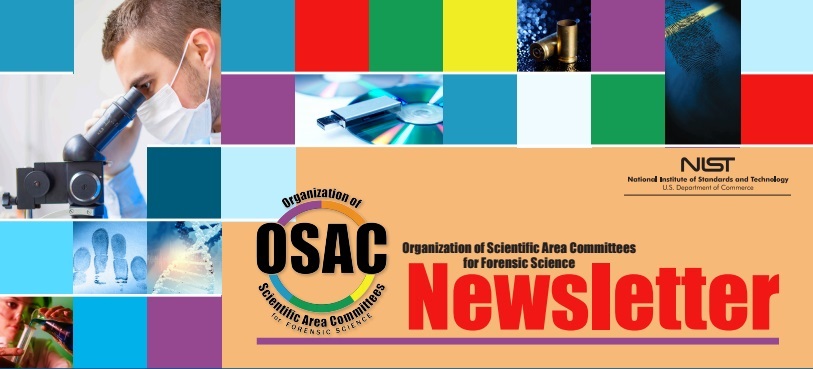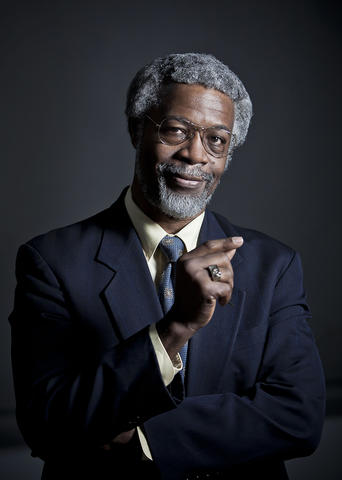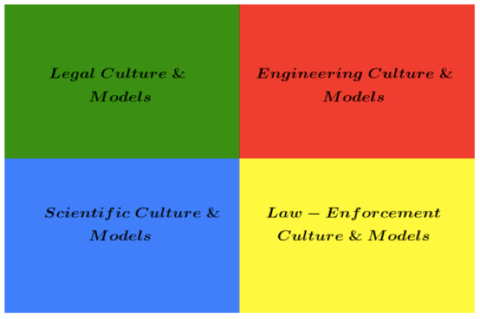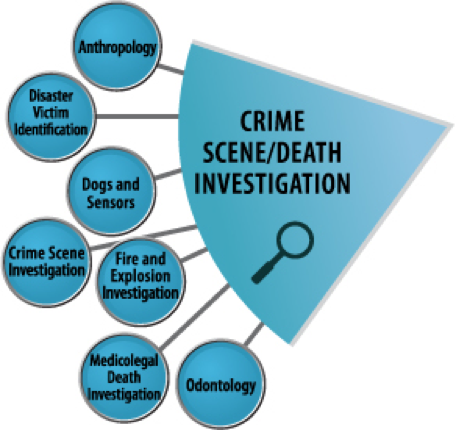OSAC Newsletter, March 2017

March 2017
New FSSB Member Dr. Sylvester James "Jim" Gates, Jr. on the Importance of Science in Standards | OSAC Subcommittees Submit New Forensic Science Work Items to Standards Developing Organizations (SDOs): Public Comment Periods Opening Soon | Standards Developing Organizations (SDOs) News | Status of Standards/Guidelines Recommended for Inclusion on OSAC Registry | On the Horizon
New FSSB Member Dr. Sylvester James “Jim” Gates, Jr. on the Importance of Science in Standards

Dear Forensic Science Stakeholders and OSAC Colleagues,
The Organization of Scientific Area Committees for Forensic Science (OSAC) is unlike many existing organizations. The majority of OSAC’s work is produced by a highly diversified cross section of stakeholders consisting entirely of active volunteers who are driven by a desire for positive change. The future of OSAC depends primarily on the continued enthusiasm of its volunteer participants in facilitating the development of standards that meet the high threshold of scientifically valid test methods. I am honored to have recently become a part of the OSAC community and the OSAC process.
As a new member of the Forensic Science Standards Board (FSSB), I will attempt to contribute to the evolution of forensic science toward improved timeliness and accuracy of analytical results. This is an admirable cause that supports the pursuit of justice. My own scientific background is not forensics-related. I bring to the conversation an outsider’s opinions and perspective on how to best align the practices of forensic science with the mores, standards, and experimental designs common to other fields that use the designation of ‘science.’ I hope this view can trigger concepts, ideas, and suggestions among the deep content masters and experts within OSAC to improve the quality and consistency of forensic science.
An Outsider’s View of Cultural Components of Forensic Science
After beginning service on the National Commission on Forensics Science (NCFS) in 2013, I gained a deeper appreciation of the culture of the forensic science community. In talks to the American Association for the Advancement of Science and the National Science Foundation, I have used the accompanying figure to convey my impression of four distinct cultures existent within this community (Figure 1). OSAC must strive to effectively function within this complex cultural matrix, and the organization’s position within the National Institute of Standards and Technology (NIST) is well-aligned with their role in fostering the exchange of information and influence between the engineering and scientific components of the forensic science community.

Figure 1: Four distinct cultures existent within the forensic science community.
However, OSAC must face an even more daunting task. In these previous talks, I have identified what I call “The Dilemma of Ways of Knowing” for the NCFS. As OSAC interfaces with law enforcement through the practice of forensic science in the crime laboratory, it faces a variant of this dilemma. I perceive directly identifiable conflicts between countervailing principles. The primary conflict is between the scientific paradigm of direct observation versus the practical paradigm of forensic science laboratory reports and expert testimony. I perceive within this struggle a debate between principles of empirical validation, scientific method, and evidence-based literature, and those of historical experience, established practice, and a consensus-based literature. These principles are being pitted one against the other, and the debate about how much weight to give each must be resolved.
To my outsider’s (and admittedly less experienced) eyes, currently accepted standards seem practitioner-dominated, with less attention focused upon the empirical ethos that has marked the rise of scientific principles based on demonstrable data derived from observation. A criticism delivered initially by others and one that seems valid to me is that the state of current standards in many (but not all) domains of forensic science is more deeply rooted in the legacy of experience than scientific empiricism.
OSAC’s purpose is to “promote standards and guidelines that are fit-for-purpose and based on sound scientific principles.” Promoting test methods that are timely and “fit-for-purpose” for the job at hand, while also demonstrating scientific validity through their use of empirical data, repeatability, and reproducibility, can at times be challenging.
However, OSAC can address this challenge by promoting only those documents to the OSAC Registry that are:
- Clear
- Understandable
- Timely
- Specific
- Balanced within experimental limitations
- Repeatable
- Reproducible
- Backed by appropriate references and scientific data.
To a scientific outsider, the relatively common lack of understanding of uncertainty or “error-bars” within forensic science disciplines, or even acknowledgment that such uncertainty exists, is mystifying and a barrier for a scientific-based understanding of the field. OSAC Registry standards should strive to acknowledge the limitations or absence of scientific data where they do not yet exist, convey a level of uncertainty that specific results may produce (when feasible), and incorporate measures to reduce the potential for error and bias.
Unquestionably, including all these elements in one standard or guideline is no small task, and at times will not be possible. Standards might need to be produced in smaller “bites.” OSAC will have to strike the right balance in each case to produce timely standards and guidelines, while at the same time moving the “state of the art” or the “state of the science” forward.
One question I put to many within the forensic science community is, “Do you wish to have the full-throated and whole-hearted support of scientists outside your community?” OSAC can assist in gaining this support.
In the next 3 years, I hope to assist OSAC in achieving its goals and to continue OSAC’s efforts to raise the bar.
Having observed the forensic science community since 2013, I have become increasingly confident in its capacity to deliver, both in terms of laboratory practices and their exposition in the courtroom, science on behalf of justice. To do so requires scientific standards, and the OSAC community can proudly point to its role in getting this right. As the first Director of the Federal Bureau of Investigation (FBI) indicated, this “bulwark of criminal investigation” is the application of science that can end with “the conviction of the guilty or the acquittal of the innocent.” Forensic science must lead, without bias, to whichever outcome is supported by the practical application of best scientific practice to the evidence.
Sincerely,
Dr. Sylvester James "Jim" Gates, Jr.

Two subcommittees within OSAC’s Crime Scene/Death Investigation SAC have recently approved new documents for submission to the American Academy of Forensic Sciences Academy Standards Board (ASB) for consideration.
The Disaster Victim Identification Subcommittee submitted:
- Standard Practices for DNA Analysis for Human Identification in Mass Fatality Incidents
- Mass Fatality Incident Data Management: Standard Practices for the Medicolegal Authority
- Postmortem Impression Submission Strategy for Comprehensive Searches of Essential Automated Fingerprint Identification System Databases
- Mass Fatality Incident Scene Processing: Standard Practices for the Medicolegal Authority
- Standard Practices for Forensic Pathologist in the Disaster Victim Identification Context
- Forensic Anthropology in Disaster Victim Identification: Standard Practices for the Medicolegal Authority
The Dogs and Sensors Subcommittee also submitted several work items to the ASB. Titles and further details can be found in the “SDO News” section.
These documents were submitted to SDOs. The designated SDOs will subsequently announce when these documents are available for public comment.
This section describes SDO activities relevant to OSAC and the forensic science community.
The American Academy of Forensic Sciences (AAFS) American Standards Board (ASB) Recent Activity
The following Project Initiation Notification System (PINS) will appear in the ANSI Standards Action on March 17, 2017. This will begin a 30-day period for public comment on the initiation of the ASB’s work on the documents.
New Standards:
BSR/ASB Std 022-201x, Standard for Forensic DNA Analysis Training Programs
This standard provides the general requirements for a forensic DNA laboratory’s training program in DNA analysis and data interpretation.
BSR/ASB Std 023-201x, Standard for Training of Forensic DNA Isolation and Purification Methods
This document provides requirements to ensure proper training in the approved methods of DNA isolation and purification used within the trainee’s forensic DNA laboratory.
BSR/ASB Std 024-201x, Crime Scene/Death Investigation - Dogs and Sensors Pre-Scented Canines - Location Check
To provide standards for training, certification, and documentation pertaining to canine teams (canine and handler) trained to conduct pre-scented canine location checks.
BSR/ASB Std 026-201x, Crime Scene/Death Investigation - Dogs and Sensors Pre-Scented Canines - Aged Trail Search
To provide the standards for training, certification and documentation pertaining to pre-scented canine-aged trail search. Pre-scented canine aged trail searches use a canine team (canine and handler) to search for and follow aged trails of a specific person’s (target) scent over different surface types. An aged trail is a human scent pathway that has been present for some period of time. Typically expressed with a time frame associated with the trail. e.g., a 48-hour old trail.
BSR/ASB Std 027-201x, Crime Scene/Death Investigation - Dogs and Sensors Tracking/Trailing One or More Persons Based on Last Known Position
To provide standards for the training, certification, and documentation pertaining to canine teams (canine and handler) trained to search for specific person(s), location(s), and/or article(s) by starting from the last known position. This pertains to trails less than 48 hours old.
ASTM Committee E30 on Forensic Sciences Recent Activity
E30.01 Criminalistics
The following work items are underway:
WK58027 - Standard Practice for Preserving Ignitable Liquids and Ignitable Liquid Residue Extracts from Fire Debris Samples is a work item revision to existing standard E2451-13
WK58028 - Standard Guide for Forensic Examination of Non-Reactive Dyes in Textile Fibers by Thin-Layer Chromatography is a work item revision to existing standard E2227-13
New Approved Standards:
ASTM E2926 - 17 Standard Test Method for Forensic Comparison of Glass Using Micro X-ray Fluorescence (µ-XRF) Spectrometry
ASTM E1588 - 17 Standard Practice for Gunshot Residue Analysis by Scanning Electron Microscopy/Energy Dispersive X-Ray Spectrometry
E30.12 Digital and Multimedia Evidence
The following work item is underway:
WK58084 - Standard Practice for Computer Forensics is a work revision to existing standard ASTM E2763-10 (LINK EXPIRED)
Learn more about ASTM E30.
This section describes SDO activities relevant to OSAC and the forensic science community.
OSAC’s aim is to identify and promote technically sound, consensus-based, fit-for-purpose documentary standards that are based on sound scientific principles. This will be achieved through the OSAC Registry. A standard or guideline that is posted on the Registry demonstrates that the methods it contains have been assessed to be valid by forensic practitioners, academic researchers, measurement scientists, and statisticians through a consensus development process that allows participation and comment from all relevant stakeholders.
Below is a listing of standards or guidelines that are under consideration for the OSAC Registry, along with their status in the approval process.
Standards Documents Open for Public Comment
The intent of the public comment period is to collect public opinion on inclusion of the standard to the OSAC Registry (OSAC is not soliciting potential revisions to the documents themselves.)
There is nothing available for Public Comment at this time.
Standards Documents in Public Comment Adjudication Phase
Public comment period is closed for the following standards/guidelines as OSAC units review and adjudicate comments received.
ASTM E2388-11 Standard Guide for Minimum Training Requirements for Forensic Document Examiners
This guide provides minimum requirements and procedures that should be used for the fundamental training of forensic document examiners.
This guide may not cover all aspects of training for the topics addressed or for unusual or uncommon examinations.
ASTM E2451-13 Standard Practice for Preserving Ignitable Liquids and Ignitable Liquid Residue Extracts from Fire Debris Samples
This practice describes procedures for preserving residues of ignitable liquids in extracts obtained from fire debris samples and questioned ignitable liquid samples.
Standards Documents at SAC for Vote
There is nothing at the SAC for vote at this time.
Standards Documents at FSSB for Vote
ASTM E2330-12 Standard Test Method for Determination of Concentrations of Elements in Glass Samples Using Inductively Coupled Plasma Mass Spectrometry (ICP-MS) for Forensic Comparisons
One objective of a forensic glass examination is to compare glass samples to determine if they can be discriminated using their physical, optical or chemical properties (for example, color, refractive index (RI), density, elemental composition). If the samples are distinguishable in any of these observed and measured properties, it may be concluded that they did not originate from the same source of broken glass. If the samples are indistinguishable in all of these observed and measured properties, the possibility that they originated from the same source of glass cannot be eliminated. The use of an elemental analysis method such as inductively coupled plasma mass spectrometry yields high discrimination among sources of glass. This test method covers a procedure for quantitative determination of the concentrations of magnesium (Mg), aluminum (Al), iron (Fe), titanium (Ti), manganese (Mn), rubidium (Rb), strontium (Sr), zirconium (Zr), barium (Ba), lanthanum (La), cerium (Ce), neodymium (Nd), samarium (Sm), and lead (Pb) in glass samples.
ASTM E2548-11e1 Standard Guide for Sampling Seized Drugs for Qualitative and Quantitative Analysis
This guide covers minimum considerations for sampling of seized drugs for qualitative and quantitative analysis.
ASTM E2926-13 Standard Test Method for Forensic Comparison of Glass Using Micro X-ray Fluorescence (μ-XRF) Spectrometry
This test method is for the determination of major, minor, and trace elements present in glass fragments. The elemental composition of a glass fragment can be measured through the use of μ-XRF analysis for comparisons of glass. This test method covers the application of μ-XRF using mono- and poly- capillary optics, and an energy dispersive X-ray detector (EDS).
Standards Documents in the Appeals Phase
The public appeals phase is open for the following standard. Appeals may only be submitted by individuals or groups that submitted a comment during the open public comment phase that believe their comment was not properly adjudicated. Submitted appeals must relate to the comment adjudication process, not technical issues.
ISO/IEC 17020:2012 Requirements for the Operation of Various Types of Bodies Performing Inspection
ISO/IEC 17020:2012 specifies requirements for the competence of bodies performing inspection and for the impartiality and consistency of their inspection activities.
It applies to inspection bodies of type A, B or C, as defined in ISO/IEC 17020:2012, and it applies to any stage of inspection.
The status of standards documents that are under consideration for the OSAC Registry can also be found on the Status of Standards Documents OSAC webpage.
On the Horizon
This section describes public and internal OSAC meetings that are on the horizon.

• (Internal OSAC Meeting) March 16-17, 2017 FSSB meeting (Dulles, VA)
• (Internal OSAC Meeting) April 18-21, 2017 Full OSAC meeting (Leesburg, VA)
• (Internal OSAC Meeting) June 1-2, 2017 FSSB meeting (Frankfort, KY)
• (OSAC Presentations) August 6-12, 2017 at the Annual IAI International Forensic Educational Conference (Atlanta, GA)
• (Internal OSAC Meeting) Fall OSAC Meetings, September 25-29, 2017, location to be determined: SAC + Resource Committees, September 25-26; OLSS 2.0 Meeting (FSSB + 24 Subcommittee Chairs), September 27; FSSB Meeting, September 28-29

